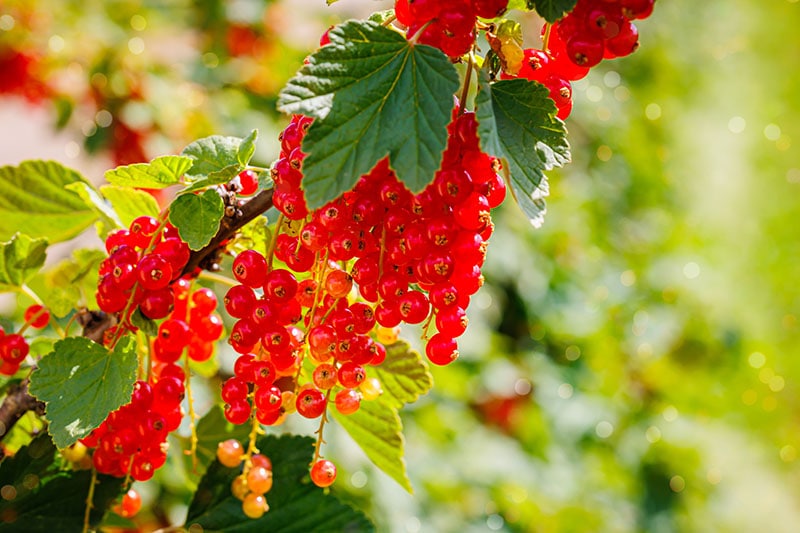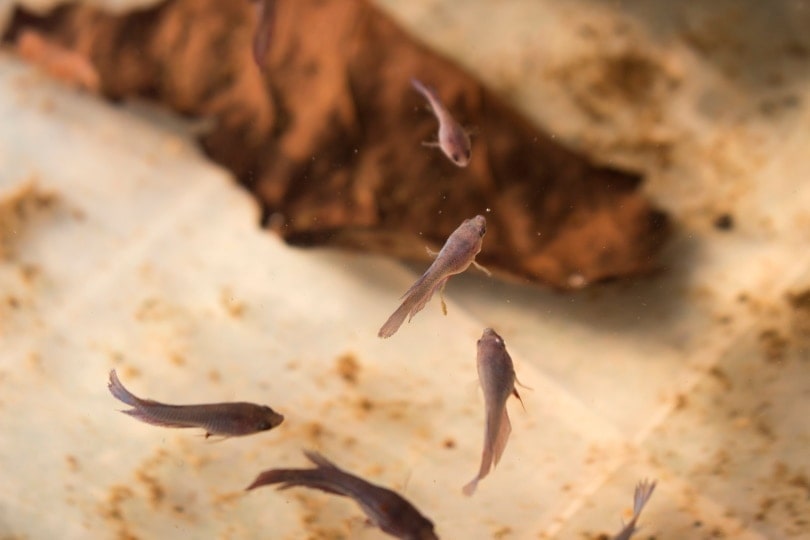Can Dogs Eat Currants? Vet Reviewed Health Concerns & FAQ

Updated on

Click to Skip Ahead
Many people know that grapes and raisins are toxic to dogs, but what about currants? That depends on what kind of currants you are talking about. Zante currants and other members of the Vitus genus are toxic to dogs. Learn everything you need to know about currant poisoning in dogs and what you should do if your dog eats some.
What Are Currants?
Zante currants, also known as black Corinth grapes and Champagne grapes, are the same species of plant as grapes and raisins; Vitis vinifera and are toxic. These fruits are often sold dried and are used in Irish soda bread, scones, and other baked goods.
True currants, which are typically black, red, or white, belong to the Ribes genus. Though confusing, these fruits are not toxic to dogs. If they eat too much, they may get an upset stomach, but true currants are not as risky as the Vitis vinifera species. Blackcurrants, redcurrants and white currants are usually used to make jellies and sauces.

Currants Are Toxic to Dogs
Grapes, raisins, and Zante currants are potentially toxic to dogs and other animals. The veterinary community is not entirely sure how these foods are poisonous or at what doses, but tartaric acid may be involved. The toxicity does not appear to be dose-dependent; some dogs develop toxicity after eating a small amount of fruit while others may eat larger amounts and be fine. At this stage, any amount is considered potentially problematic and could lead to kidney injury or even kidney failure.
Why Are Grape Currants Toxic?
There have been theories over the years as to what the exact toxic substance is in this fruit family, including a toxic fungus or mold, tartaric acid or an aspirin-like salicylate drug. Tartaric acid is now considered the most likely cause as it has been proven to induce kidney injuries. Owners should avoid any exposure to grapes, raisins, or currants for their dogs as even a small amount has the potential to cause severe problems. It appears that some individuals may be more susceptible to the toxin and there is no way of predicting which dogs will develop kidney problems.
What Are the Signs of Currant Toxicity?
The most common sign of currant toxicity is vomiting, which may appear about 24 hours after ingestion. Lack of appetite, diarrhea, and lethargy may appear within the next 12 to 24 hours.
- Nausea
- Lack of appetite
- Vomiting
- Diarrhea
- Abdominal pain
- Excessive thirst
- Excessive urination
As the poisoning progresses, the kidneys may stop functioning, and the dog may not be able to produce urine. The buildup of waste products that the kidneys would normally filter out leads to disruption of normal bodily functions; these dogs are severely unwell and sometimes unresponsive. Once the kidneys stop producing urine, a positive outcome is unlikely.
What to Do If Your Dog Eats Currants
If you think your dog has been exposed to Zante currants/dried currants, grapes, or raisins, contact the Pet Poison Helpline or call the nearest emergency clinic urgently. Because the veterinary community is still unsure about many aspects of currant poisoning, it’s important to err on the side of caution and get the poisoning diagnosed and treated as soon as possible.
If your dog has eaten any true currants of the Ribes genus (such as blackcurrants) you don’t need to worry about toxicity or kidney problems however, they may develop an upset stomach if they have eaten a large amount. Monitor for any signs of vomiting or diarrhea and phone your vet if this occurs.

Conclusion
Zante currants and other members of the vitus genus are extremely toxic to dogs. Even small doses can potentially cause kidney injury or failure, so it’s important to avoid allowing your dogs to eat the fruits or any foods that contain them. If you suspect your dog has eaten Zante currants, contact the Pet Poison Helpline or the nearest emergency clinic immediately for next steps.
Featured Image Credit: Jurga Jot, Shutterstock










